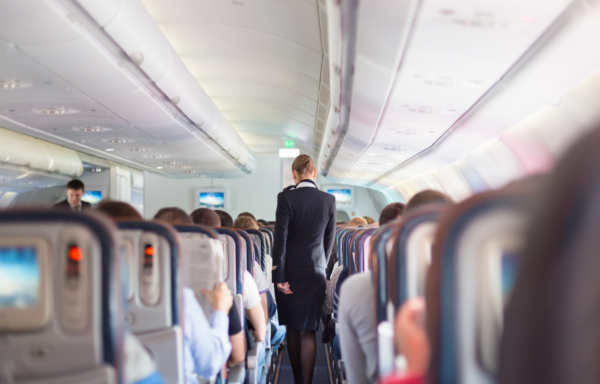Fight or Flight: Analysis of an Aircraft Jump Seat

Case Summary: A flight attendant was seated in a forward-facing crew jump seat (L2) in the rear cabin of a commercial aircraft during a flight. She reported that as the aircraft landed and began to slow, she was thrown from side to side and impacted the side of her head on the handle of rear cabin door. While her injuries were not serious, the flight attendant was not comfortable occupying that jump seat position on other flights.
When the flight attendant was later assigned to L2 for another flight, she refused the assignment due to her concerns regarding the safety of this jump seat position. The flight attendant was disciplined and told she did not have the right to refuse a seat assignment. She was also warned that continued refusal of assignments would result in further disciplinary action. After failing initial attempts to resolve this issue with the airline, the flight attendant’s union sought assistance under fair labor laws citing an employee’s right to refuse dangerous work.
The airline’s safety and emergency procedures required a flight attendant to occupy the L2 jump seat during taxi, take off, and landing. While the L2 jump seat was compliant with the applicable regulation requirements for airworthiness, the flight attendant’s concerns were consistent with the history of reported injuries sustained by crew members assigned to that position.
Expert Analysis: Investigation of the design revealed a forward-facing, folding crew seat in very close proximity to the rear cabin door. The restraint system used a retractor that would lock based on the speed at which the webbing was extended. In other words, the retractor would only lock if the webbing was pulled off the retractor faster than a specific rate.
In considering the restraint system design relative to the subject incident, it was determined the retractor did not lock early in the rough landing. As the aircraft began to brake, the unlocked retractor allowed the flight attendant to rotate forward. When the back of the plane began to fishtail, the flight attendant’s head and upper torso were permitted to move laterally and impact the cabin door.
While the other cabin crew seats used the same retractor and harness, they were all positioned to face the rear of the aircraft. The rear-facing occupants would be less affected by lateral motion because they would be pushed into their seats when the aircraft slowed during landing. L2 was the only forward-facing cabin crew seat in the aircraft and there was no padding on the surfaces adjacent to the seat. There were several alternative options (e.g., additional padding) to reduce risks to an occupant of the L2 jump seat, which the airline was aware of but did not choose to install.
Research revealed that the airline operated one other aircraft with a forward-facing cabin crew seat. That seat was equipped with a manually locking retractor, and the area adjacent to the occupant’s head was padded. The manual locking retractor would allow the crew member to lock the harness before landing, thus preventing webbing payout and keeping the occupant in an upright seated position against the seatback.
Result: The case was heard by a labor relations officer who determined the flight attendant’s refusal to occupy the subject seat was allowable due to the dangerous conditions present at that seating position. The airline was directed to take measures to provide additional protection for crew members assigned to the subject seat.
John R. Yannaccone, P.E.
Principal Mechanical Engineer
View all articles by John R. Yannaccone, P.E.

